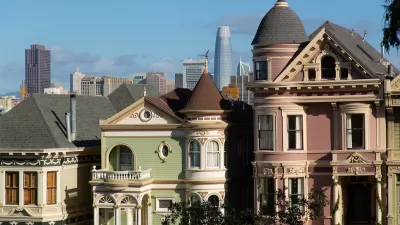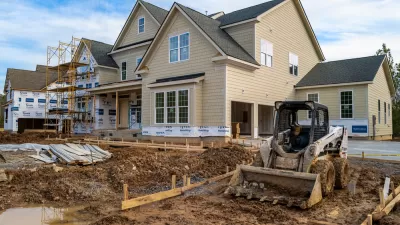In the three steps of placemaking, crafting a meaningful vision is the first and most straightforward, yet it's the most under-leveraged. Continuing his series on "Municipal Placemaking Mistakes," Nathan Norris describes how to get it right.
Rarely do communities fully appreciate the political implications of articulating a collective local vision. So they don't invest in the heavy lifting required to create a meaningful vision.
Norris goes into tools for visioning: Multiple Scenarios, Comparitive Impact Analysis (Economic, Environmental, Health, Visual, Freedom/Access), and Non-NIMBY Empowerment. And offers up some encouragement:
"Going through the hard work of producing a meaningful vision gives politicians the political cover to safeguard it. For example, if a politician’s major campaign contributor happens to be a developer who is seeking to develop property in a manner that violates the community vision, do not count on that politician to employ the courage to push back. On the other hand, the politician is substantially more likely to exercise some backbone if he or she can explain to the developer the level of support that the vision has, and that there are reports that say that the vision will be better economically, environmentally and visually while improving the health of the citizens."
FULL STORY: Municipal Placemaking Mistakes 03: The Importance of a Meaningful Vision

Trump Administration Could Effectively End Housing Voucher Program
Federal officials are eyeing major cuts to the Section 8 program that helps millions of low-income households pay rent.

Planetizen Federal Action Tracker
A weekly monitor of how Trump’s orders and actions are impacting planners and planning in America.

The 120 Year Old Tiny Home Villages That Sheltered San Francisco’s Earthquake Refugees
More than a century ago, San Francisco mobilized to house thousands of residents displaced by the 1906 earthquake. Could their strategy offer a model for the present?

HSR Reaches Key Settlement in Northern California City
The state’s high-speed rail authority reached an agreement with Millbrae, a key city on the train’s proposed route to San Francisco.

Washington State Legislature Passes Parking Reform Bill
A bill that would limit parking requirements for new developments is headed to the governor’s desk.

Missouri Law Would Ban Protections for Housing Voucher Users
A state law seeks to overturn source-of-income discrimination bans passed by several Missouri cities.
Urban Design for Planners 1: Software Tools
This six-course series explores essential urban design concepts using open source software and equips planners with the tools they need to participate fully in the urban design process.
Planning for Universal Design
Learn the tools for implementing Universal Design in planning regulations.
Ada County Highway District
Clanton & Associates, Inc.
Jessamine County Fiscal Court
Institute for Housing and Urban Development Studies (IHS)
City of Grandview
Harvard GSD Executive Education
Toledo-Lucas County Plan Commissions
Salt Lake City
NYU Wagner Graduate School of Public Service




























